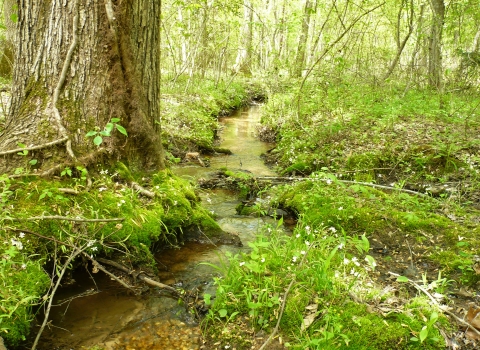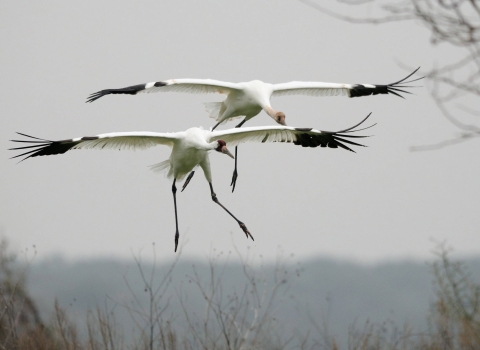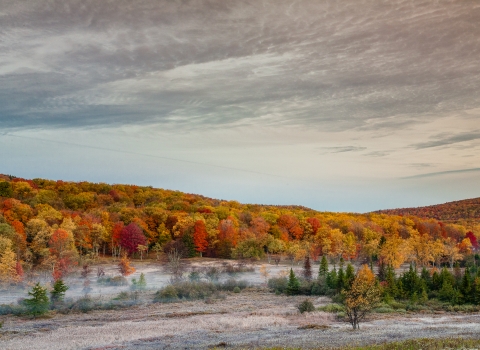VERO BEACH, Florida
,
March 11, 2024
(press release)
–
VERO BEACH, Fla. – The Department of the Interior today announced the establishment of the Everglades to Gulf Conservation Area in southwest Florida as the 571st and newest unit of the National Wildlife Refuge System, which is managed by the U.S. Fish and Wildlife Service. The new four-million-acre conservation area conservation area Secretary Deb Haaland, Assistant Secretary for Fish and Wildlife and Parks Shannon Estenoz, and U.S. Fish and Wildlife Service Director Martha Williams celebrated the establishment today at Pelican Island National Wildlife Refuge in commemoration of the 121st birthday of the Refuge System. On March 14, 1903, President Theodore Roosevelt designated Pelican Island as the nation’s first national wildlife refuge national wildlife refuge “The Biden-Harris administration is committed to conserving our lands and waters for current and future generations – and our successes expanding the National Wildlife Refuge System underscore our collaborative work to bring these special places closer to the communities that surround them,” said Secretary Deb Haaland. “The National Wildlife Refuge System plays an invaluable role in providing vital habitat for wildlife species, offering outdoor recreation access to the public, and bolstering climate resilience across the country. Today, we celebrate the effort to preserve this working rural landscape, provide wildlife linkages, address the biodiversity crisis, and build resilience in the face of climate change climate change The establishment of the Everglades to Gulf Conservation Area will catalyze conservation within 4,045,268 acres using tools like voluntary conservation easements with willing landowners. The conservation area runs from southwest Florida into the state’s northern stretches, which is home to a diversity of species like the Floridablack bear, Everglade snail kite, Floridapanther, sand skink and many other rare and endemic species, including more than 100 threatened or endangered species. Today’s announcement celebrates the fourth new unit in the Refuge System under Secretary Haaland’s leadership, including the Wyoming Toad Conservation Area in Wyoming, the Paint Rock River National Wildlife Refuge in Tennessee, and the Lost Trail Conservation Area in Montana. Efforts to invest in and expand the Refuge System further the Biden-Harris administration’s work to support community-driven efforts to conserve and restore the nation’s lands and waters through America the Beautiful initiative. “This new conservation area is a result of the dedication and collaboration of members of the public, partners, Tribes and private landowners who are committed to conserving Florida’s natural heritage – diverse habitat, wildlife and recreation,” said Assistant Secretary for Fish and Wildlife and Parks Shannon Estenoz. “By working with our partners including private landowners, the U.S. Fish and Wildlife Service will be able to conserve important habitat to support recreation and working lands, protect species, address the biodiversity crisis and build resilience in the face of climate change.” Conservation areas are national wildlife refuges that consist primarily or entirely of conservation easements on private lands in cooperation with landowners. The new conservation area abuts the Everglades Headwaters National Wildlife Refuge and Conservation Area and will span twelve counties west of Lake Okeechobee from Lakeland to Naples. The Conservation Area will enhance and support the conservation objectives of the Everglades Restoration program, which the Biden-Harris administration has supported at record federal funding levels since taking office. The Everglades to Gulf Conservation Area weaves together public and private land protection opportunities like the partnership approach implemented at the Everglades Headwaters National Wildlife Refuge and Conservation Area more than a decade ago. The new refuge helps address broad public concerns regarding the loss of wildlife, habitat, access to natural lands and waters and water quality. Existing conservation lands and waters within this landscape already provide for public use and access, including state lands. This refuge establishment will complement those opportunities. Under the Biden-Harris administration, the U.S. Fish and Wildlife Service has added over 500,000 acres through willing seller land acquisition and approved the potential to acquire up to 1,535,497 acres in fee-title and easements across the Refuge System. Notably, these efforts are locally supported and showcase a commitment to a collaborative and inclusive approach to conservation. March 14th marks the 121st anniversary of the National Wildlife Refuge System – an unparalleled network of 571 national wildlife refuges and 38 wetland management districts. There is a national wildlife refuge within an hour’s drive of most major metropolitan areas – hosting some 67 million visits every year – almost all offering free admittance year-round. National wildlife refuges provide vital habitat for thousands of species and access to world-class recreation, from fishing, hunting and boating to nature watching, photography and environmental education.
A conservation area or wildlife management area is a type of national wildlife refuge that consists primarily or entirely of conservation easements on private lands. These conservation easements support private landowner efforts to protect important habitat for fish and wildlife. There are 13 conservation areas and nine wildlife management areas in the National Wildlife Refuge System.
Learn more about conservation area will provide crucial protected wildlife corridors, enhance outdoor recreation access to the public and bolster climate resilience in southwest Florida.
A national wildlife refuge is typically a contiguous area of land and water managed by the U.S. Fish and Wildlife Service for the conservation and, where appropriate, restoration of fish, wildlife and plant resources and their habitats for the benefit of present and future generations of Americans.
Learn more about national wildlife refuge for the protection of nesting birds that were under threat due to overharvesting for the plume industry.
Climate change includes both global warming driven by human-induced emissions of greenhouse gases and the resulting large-scale shifts in weather patterns. Though there have been previous periods of climatic change, since the mid-20th century humans have had an unprecedented impact on Earth's climate system and caused change on a global scale.
Learn more about climate change , not just for our kids and grandkids, but for all future generations to come.”
* All content is copyrighted by Industry Intelligence, or the original respective author or source. You may not recirculate, redistrubte or publish the analysis and presentation included in the service without Industry Intelligence's prior written consent. Please review our terms of use.







